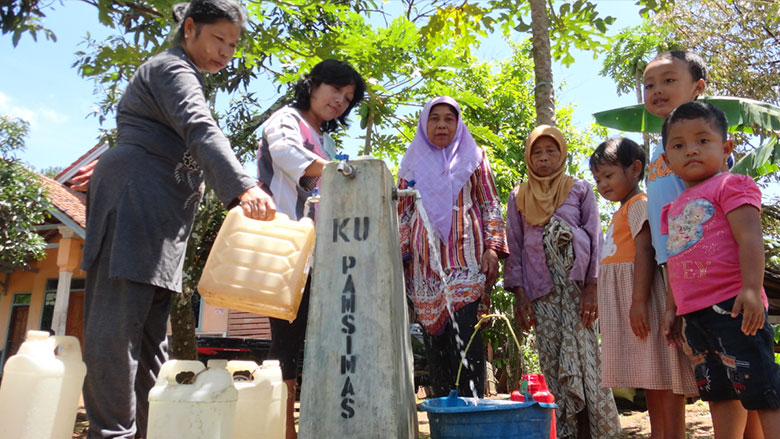Just a few years ago, residents of Pitusungu Village, in the province of South Sulawesi, Indonesia got their water any way they could: in the rainy season, they used rainwater. When it didn’t rain, they used brackish water from drill wells and shallow wells. When they could, they bought water from a local supply truck, but still used brackish water for washing kitchen utensils.
The water source is more than a matter of convenience; it can be the difference between life and death. Of the four main causes of death for children under 5 in Indonesia, two – diarrhea and typhoid – are fecal-borne illnesses linked to inadequate water supply and sanitation issues, including open defecation, lack of proper toilets, and poor hygiene practices.
Clean water is also an economic issue for every family: poor households often have to spend time procuring and fetching clean water that could be used for education or work.
But ensuring clean water across Indonesia is no easy feat. The world’s largest archipelagic country, Indonesia has more than 500 local governments on nearly 13,500 islands spread across more than 5,000 kilometers (3,000 miles) east to west.
Over 12 years beginning in 2006, the World Bank worked with the government of Indonesia to improve water and sanitation facilities to remote communities across the country. With a $137.5 million credit from IDA – the Bank’s fund for the poorest countries, a $400 million IBRD loan, and more than $500 million from the central government of Indonesia, water experts were able to reach nearly 23,000 villages across 376 districts in 33 provinces.
By 2018, more than 17 million people got access to improved water facilities, a million more than originally planned under the project. More than 15 million people got access to improved sanitation, and more than 2 million households got direct connections for clean water.
But how to sustain such a large project and push for universal access to water and sanitation? The central Indonesia government supported all villages to help develop community action plans to tap into various sources of public, private, central, and local financing. Nearly 29,000 villages produced community action plans, which include community-based associations to operate and manage water and sanitation facilities and make sure the systems can operate for the long term.
For residents of Pitusungu Village, that’s welcome news. “After [the project] built pipelines and water meters in my village, I am very comfortable and find it easy to get clean water for any need,” one Pitusungu resident said. With the right plans in place, Indonesians across the country’s thousands of islands can say the same in the years and decades to come.

